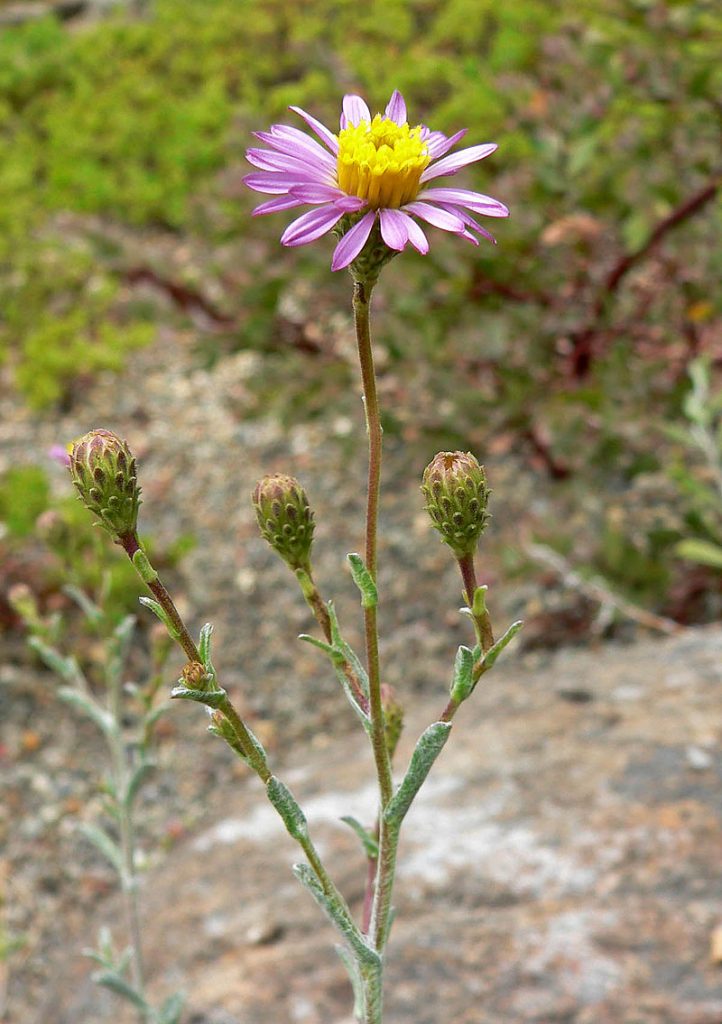
Also known as California aster, this herbaceous perennial or subshrub is native to western North America from the southwestern corner of Oregon through California to Baja California where is grows in chaparral and woodlands, forest, scrub, and grasslands. It is a member of the aster family, Asteraceae, that also includes sunflower, yarrow, and lettuce. The plant grows about 3′ tall and has a multibranched stem bearing linear to ovate, densely woolly leaves up to 3″ long. The leaves low on the stem may be toothed or lobed. From late summer to fall, single or several terminal flower heads appear that consist of 10-50 light pink ray florets surrounding up to 120 tubular yellow to orange disc florets. Each flower head is subtended by small, narrow, purple-tipped green phyllaries that are reflexed when the flower head is in full bloom. The fruit is an achene with reddish bristles on top. Sand aster is very drought tolerant and a good choice for xeriscape. The low growing cultivar, ‘Silver Carpet’, is a good addition to rock or native plant gardens. The genus name, Corethrogyne, comes from the Greek words. korethron meaning a brush for sweeping and gyne meaning female and refers to the branching of the style. The specific epithet, filaginifolia, comes from the genus name of cudweed, Filagus, and folia, meaning leaf, referring to the resemblance of the leaf to that of cudweeds.
Type: Herbaceous perennial
Bloom: Flower heads with pink ray florets surrounding yellow to orange disc florets
Size: 3′ H x 6′ W
Light: Full sun
Soil: Rocky, dry, well-drained; very drought tolerant and will not take summer water after the first year
Hardiness: Zones 8-10
Care: Low maintenance
Pests and Diseases: None of significance
Propagation: Seed, root cuttings
Companion Plants: Buckwheat (Eriogonum spp), bushmallow (Malacothamnus spp), sticky monkeyflower (Mimulus aurantiacus)
Outstanding Selection: ‘Silver Carpet’ (low growing, spreading)
Photo Credit: Stan Shebs Wikimedia Commons